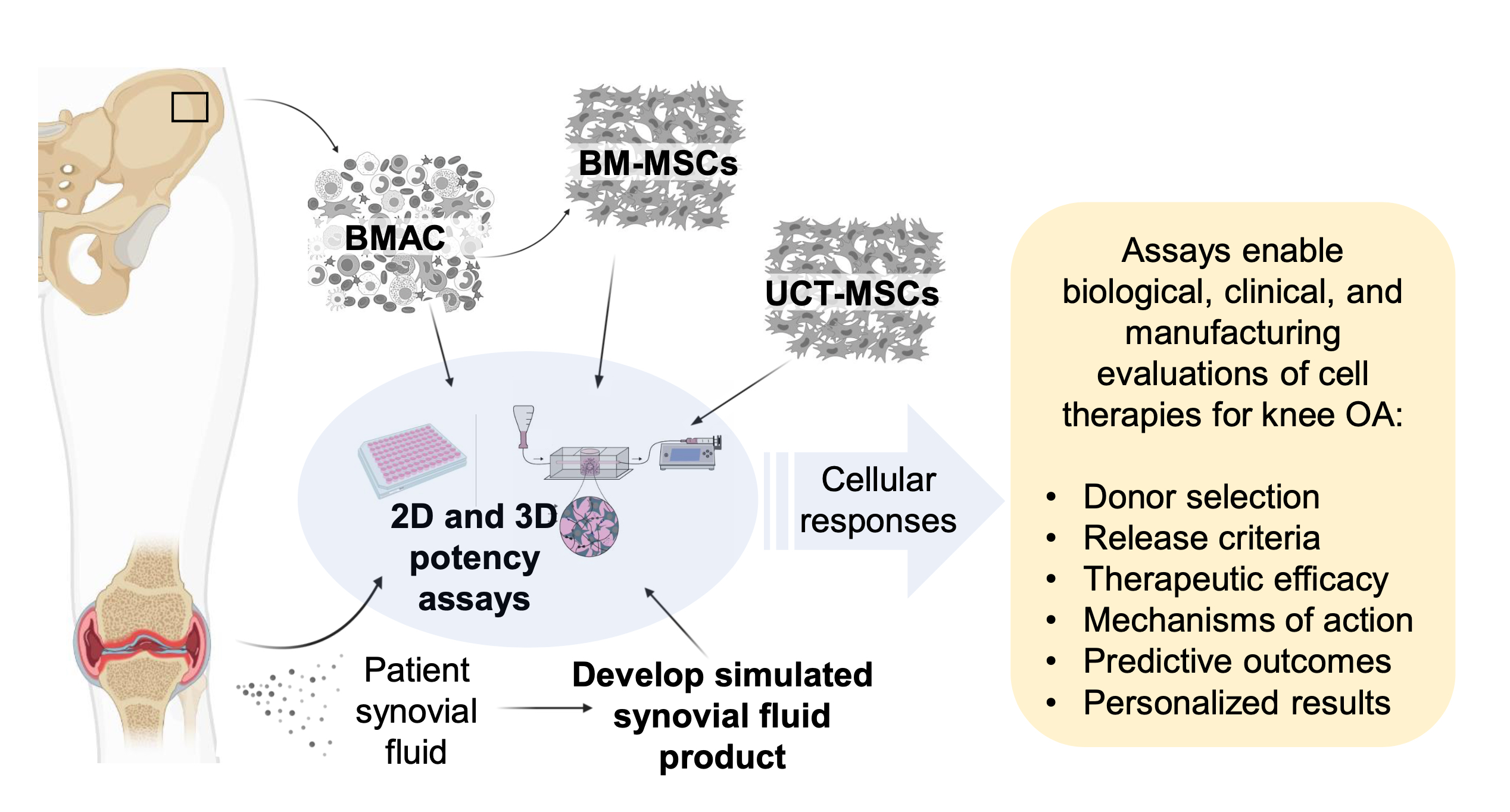Knee osteoarthritis (OA) is one of the most common degenerative joint diseases, yet there are limited effective treatment options because the variety of risk factors (e.g., injury, obesity, and genetics) make the severity and progression of the disease difficult to predict. While cell therapies offer non-surgical alternatives for knee OA, outcomes depend on the patient-specific knee OA environment. Cellular responses can be attributed to the components of synovial fluid (SF), which are highly variable among OA patients, adding to the complexity of understanding and treating OA. Therefore, a better understanding of how cell therapies respond to knee OA SF is needed.
Simulated Synovial Fluid Can Evaluate Potential Cell Therapy Performance
OA-simulated SF (simSF) provides the opportunity to evaluate how different cell therapies respond to an OA-like environment and potentially advance effective treatment for knee OA. By characterizing OA patient-derived SF (pdSF) and developing OA-targeted potency assays, researchers evaluated cell therapies and developed a simSF that can be used in preclinical studies without the variabilities of using pdSF. With a high fidelity in recreating the OA environment, the simSF bypasses the need for pdSF and yields reproducible predictive outcomes for investigating areas of OA biology and improving knee OA treatment.
- Clearly defined components: OA simSF was developed based on the results from the characterization of OA pdSF, including the relative abundance of proteins (e.g., FGF-2, HGF, G-CSF, MIG, and MCP-1) and other key components that have been reported as potential biomarkers of OA (e.g., chondroitin and keratan sulfates).
- High fidelity in replicating OA environment: Researchers performed extensive testing to determine the most representative prototype for an OA-simulated SF using biological assays, yielding a simSF that is comparable to pdSF.
- Less variability: The simSF offers a means of obtaining functional outcomes in preclinical studies without the variabilities of using pdSF.
- Highly controlled: Targeted 2D and 3D potency assays containing OA simSF that was informed by OA pdSF analyses allows for cell therapies to be evaluated with a greater reproducibility of predictive outcomes.
Suppliers of orthopedic cells and tissue cultures to pharmaceutical, biotechnology, and research organizations could use the OA-simulated SF to:
- Evaluate how different cell therapies respond to an OA-like environment (e.g., in vitro potency assays)
- Advance effective treatment for knee OA

Development process of simulated synovial fluid, comprised of the following proteins: FGFb, G-CSF, HGF, MIG, and MCP-1.
